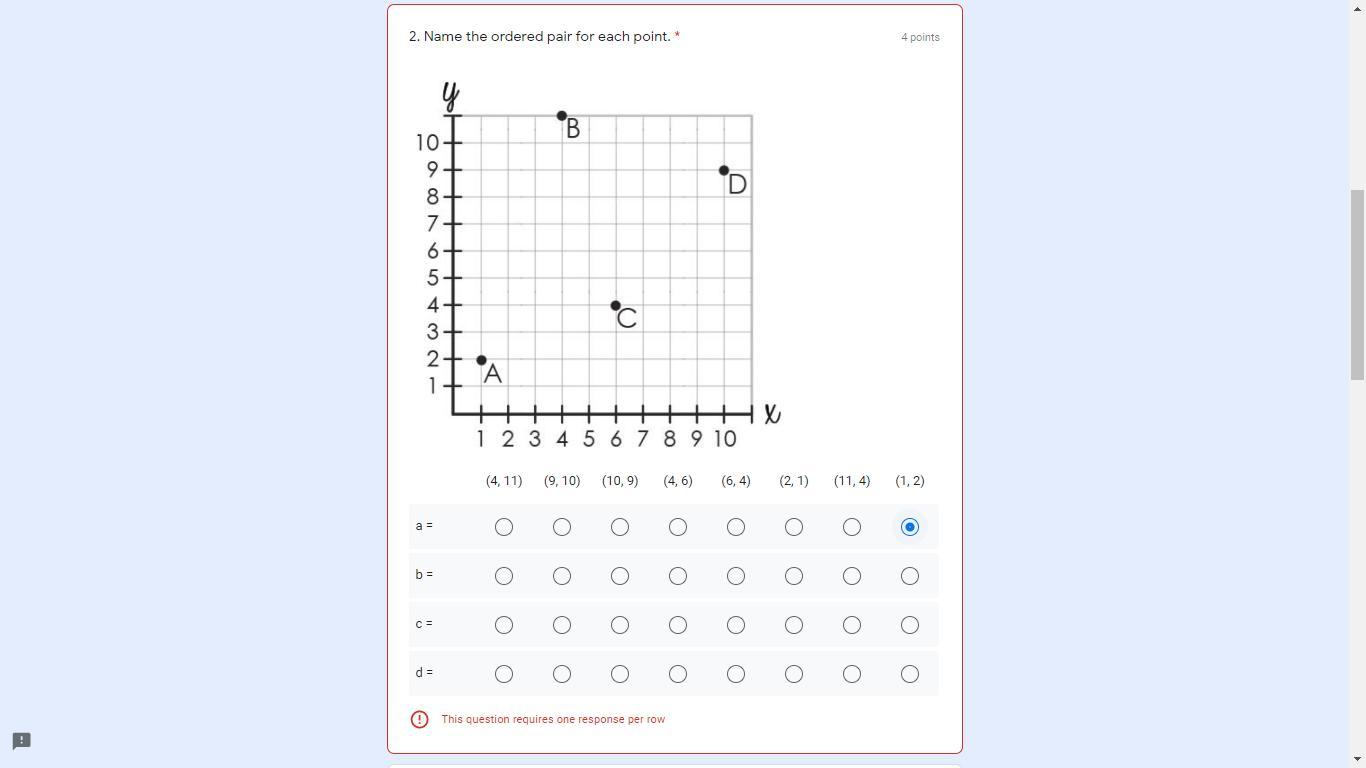Answers
Answer:
A = ( 1 , 2 )
B = ( 4 , 11 )
C = ( 6 , 4 )
D = ( 10 , 9 )
Answer:
A. (1,2), B. (4,11), C. (6,4), D. (10,9)
Step-by-step explanation:
A. On the x line, it is 1 so the number is (1, ?). On the y-line it is 2 so the point is (1,2)
B. On the x line, it is 4 so the number is (4,?). On the y-line, it is 11 so the point is (4,11).
C. On the x line, it is 6 so the number is (6,?). On the y-line, it is 4 so the point is (6,4).
D. On the x line, it is 10 so the number is (10,?). On the y-line, it is 9 so the point is (10,9).
If this helps please mark as brainliest
Related Questions
Evaluate the following expression.
12÷4×32+(4−2)5
Answers
Answer:
answer is 111
Step-by-step explanation:
Answer:
Answer:12÷4×32+(4−2)5 = 106
This is the right Answer for your question :3
I hope you are having a great day ❤️❤️❤️❤️
What sequence of transformations, when applied to △ABC , shows that △ABC is similar to △ A ′ B ′ C ′ ? dilation with respect to the origin by a scale factor of 2 followed by a translation of 2 units left dilation with respect to the origin by a scale factor of 1 2 followed by a translation of 2 units right translation of 2 units right followed by a dilation with respect to the origin by a scale factor of 1 2 translation of 2 units left followed by a dilation with respect to the origin by a scale factor of 1 2
Answers
Answer:
The correct sequence of transformations that shows that △ABC is similar to △A′B′C′ is:
translation of 2 units left followed by a dilation with respect to the origin by a scale factor of 12.
Step-by-step explanation:
A point, line, or geometric figure can be transformed in one of four ways, each of which affects the shape and/or location of the object.
In this case, we can see that a dilation with respect to the origin by a scale factor of 12 would stretch or shrink the triangle, but would not change the angles.
Therefore, we need to apply a translation first to move the triangle into the correct position.
So, we first translate the triangle 2 units left, which does not change its shape or size, but moves it to a position where it can be more easily compared to the other triangle.
Then, we apply a dilation with respect to the origin by a scale factor of 12, which stretches or shrinks the triangle but does not change its shape.
PLZZZ HELP ME GIVING 20 POINTTSSSS
Answers
Answer:4/5
Step-by-step explanation:
I think it's 4/5 because the number 3 is only one number of 5. And if you subtract 5-1, you'll get 4.
